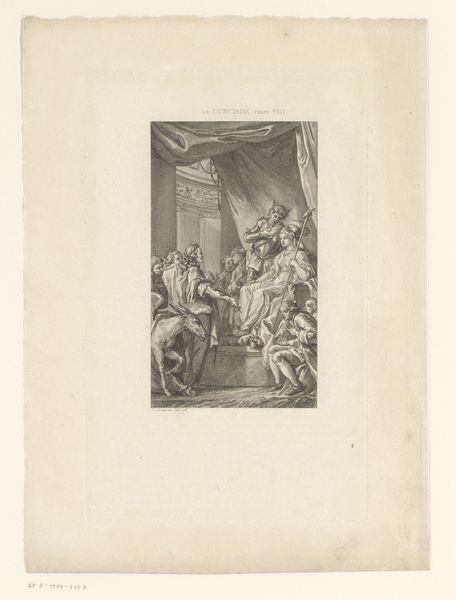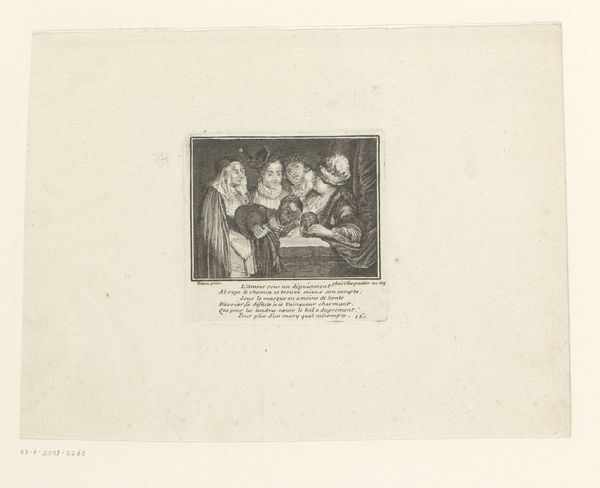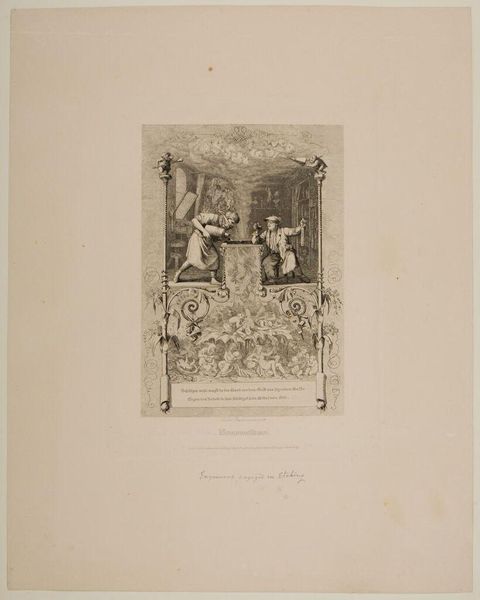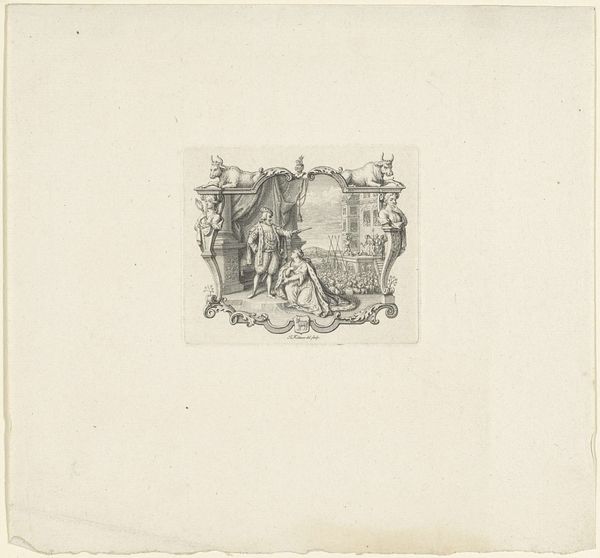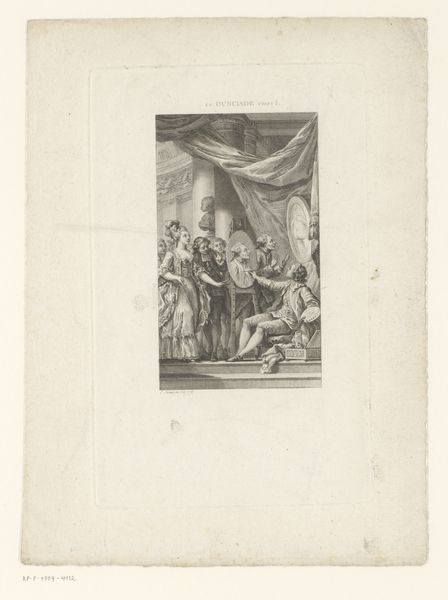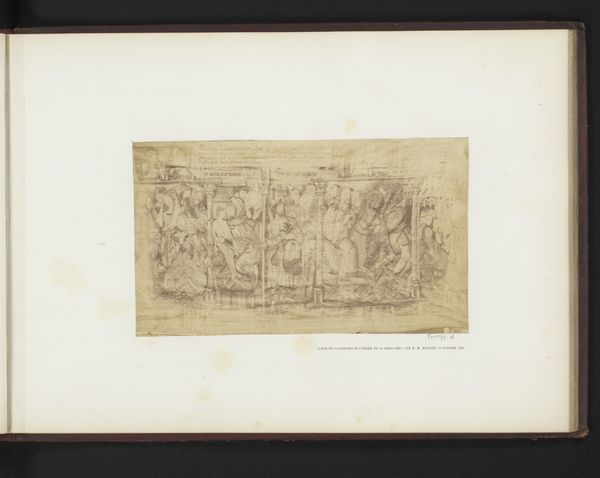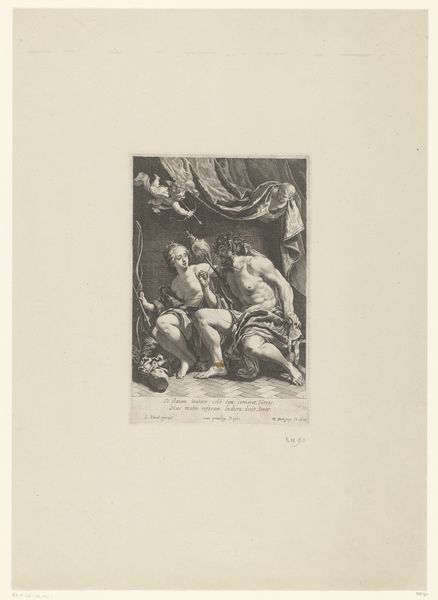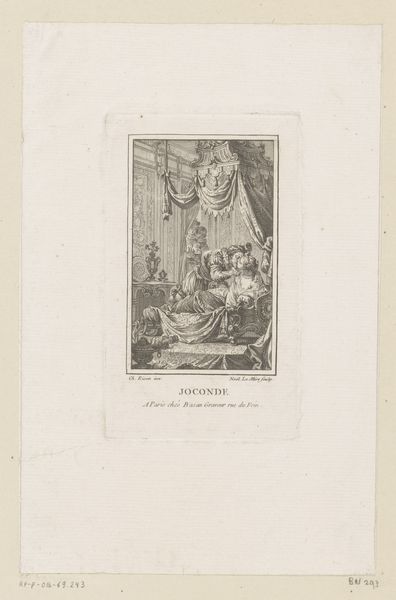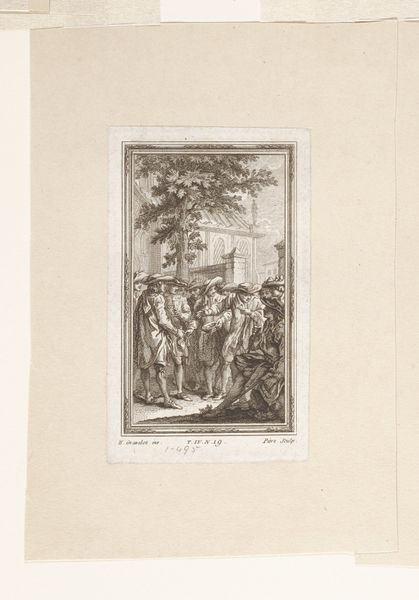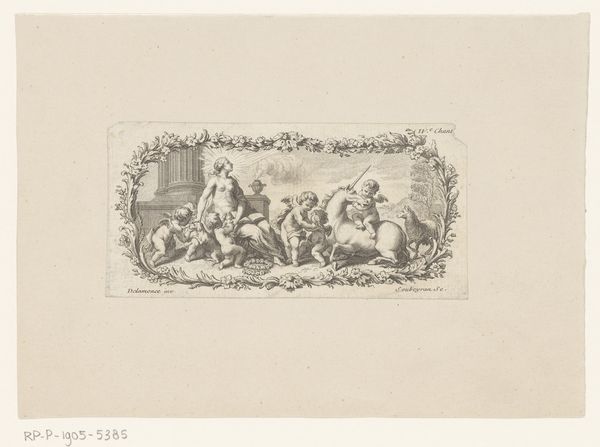
Judas and the Pieces of Silver c. 17th century
0:00
0:00
print, engraving
#
narrative-art
#
baroque
# print
#
figuration
#
history-painting
#
engraving
Dimensions: 3 7/8 x 4 1/2 in. (9.84 x 11.43 cm) (image, sheet)9 3/16 x 12 in. (23.34 x 30.48 cm) (mount)18 1/16 x 14 1/16 in. (45.88 x 35.72 cm) (mat)
Copyright: Public Domain
Curator: Peter Vander Borcht the Elder gives us this tightly rendered engraving from the 17th century, titled "Judas and the Pieces of Silver." It's currently residing at the Minneapolis Institute of Art. What strikes you first about it? Editor: The overwhelming darkness, actually. It feels heavy, like a stain on the paper, fitting given the subject matter, of course. The small scale of the engraving lends an almost secretive quality. Curator: The Baroque era had a penchant for drama, and Vander Borcht certainly achieves that with the stark contrasts of light and shadow. The medium itself, engraving, allows for such precision. We can almost feel the pressure of the engraver’s burin as it carved these lines. The resulting printed image—think of the many hands that handled it and the many sets of eyes that beheld it as a commercial object available to the masses. Editor: Absolutely. I find my eye immediately drawn to Judas in the center. The figure is bent over, contorted almost, pouring the coins out from what seems to be a cloth. His expression is concealed, but the symbolism is palpable. Gold, which is usually associated with power and wealth, in this context symbolizes treachery and betrayal. It really begs us to consider the cost of loyalty. Curator: Indeed. Notice how the coins are scattered on the checkered surface. This tile work gives the piece a certain structure but it could also be suggesting a chess board—where pawns are moved, bargains are struck, deals are sealed, and humanity and loyalty are transactional objects. There is something so clever and knowing here about what leads someone to accept payment for perfidy. Editor: It speaks to the complexities of human nature. The composition subtly directs our gaze too. From Judas in the middle to the looming figures behind him, their faces etched with expressions that hint at conspiracy. The backdrop, a simple curtain, feels almost theatrical, framing this grim transaction. This choice also directs the viewer to confront the figures more immediately, adding to its somber tone. Curator: The level of detail is astounding, considering this is an engraving. You can almost feel the weight of those silver coins. But how do you see that attention to process relating to the narrative here? Does the level of detail enhance or distract from the story Vander Borcht seeks to convey? Editor: For me, it enhances it, it elevates a commoner narrative into something both emotionally arresting and culturally important—the emotional impact of guilt and corruption has found a visual vocabulary that continues to resound across generations. The piece challenges us to reflect on not just that historic event but to confront moments when value, ethics, and profit meet in our own contemporary contexts. Curator: Precisely. It’s a confluence of medium, method, and message working together to transcend the boundaries of the frame.
Comments
No comments
Be the first to comment and join the conversation on the ultimate creative platform.
